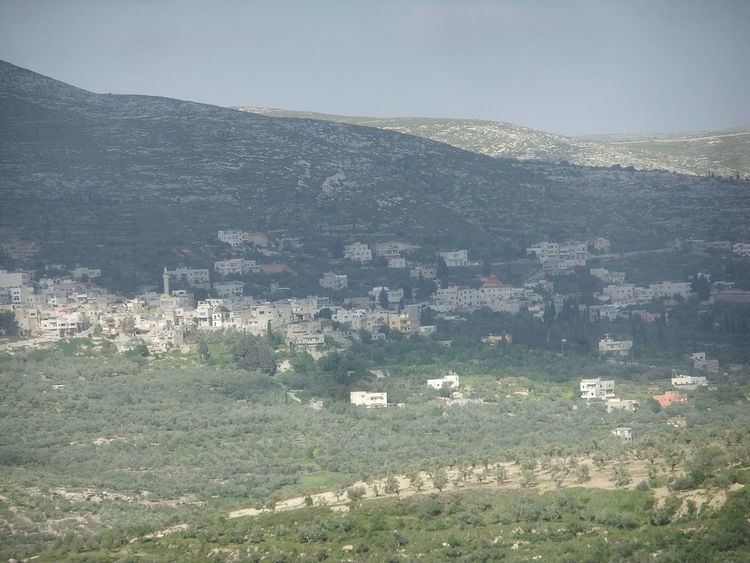Palestine grid 170/188 | ||
 | ||
Name meaning "House of Princes", "The House of Imrin" Weather 11°C, Wind S at 8 km/h, 98% Humidity | ||
Beit Imrin (Arabic: بيت امرين, transliterated as "House of Princes") is a Palestinian village in the Nablus Governorate in northern West Bank, located 18 kilometers northwest of Nablus. According to the Palestinian Central Bureau of Statistics (PCBS), the village had a population of 2,821 inhabitants in 2007.
Contents
Map of Bayt Umrin
Beit Imrin is an agricultural village with the main products being pulses, grains, vegetables, olives, grapes, almonds and figs. There is a girls' primary school and a boys' secondary school in the village. Other public facilities include a health clinic, telephone and postal services.
History
According to the Beit Imrin Village Council, Beit Imrin was founded by Arabs from nearby Burqa and the Bani Hassan tribe of Transjordan, whose members also populated Qarawat Bani Hassan. The town of Sebastia is located to the southwest, the villages of Ijnisinya and Nisf Jubeil to the south, Burqa to the northwest and Yasid to the east.
Ottoman era
In 1517, Beit Imrin was incorporated into the Ottoman Empire with the rest of Palestine. In 1596, it appeared in Ottoman tax registers as a village in the nahiya (subdistrict) of Jabal Sami in the Nablus Sanjak. It had a population of nine households and two bachelors, all Muslim, and paid taxes on wheat, barley, summer crops, olive trees, occasional revenues, goats and beehives, and a press for olives or grapes.
In 1838 American Biblical scholar Edward Robinson noted that the village was on the road to Jenin, and in 1870, French traveler Victor Guérin estimated that Beit Imrin had 700 inhabitants. In 1882 the Palestine Exploration Fund's Survey of Western Palestine (SWP) described it as "a village of moderate size in the valley at the foot of the Sheikh Beiyzid chain. It is built of stone, and has a spring in the valley to the south, and olives round it on the east and west. Some of the inhabitants are Greek Christians."
British Mandate period
In a census conducted in 1922 by the British Mandate authorities, Beit Imrin had a population of 527, composed of 15 Christians and 512 Muslims. The population increased in the 1931 census to 620, of whom 13 were Christians and 607 Muslims, in a total of 157 occupied houses.
In 1945, the population was 860, all Muslims, with 12,094 dunams of land, according to an official land and population survey. Of this, 1,442 dunams were for plantations or irrigated land, 6,819 for cereals, while 53 dunams were built-up land.
Modern era
In the wake of the 1948 Arab–Israeli War Beit Imrin came under Jordanian rule. In 1967, after the Six-Day War, the village came under Israeli occupation, and the same year the population was recorded as 1,100.
A village council to administer Beit Imrin's civil affairs was established in 1966, with the first mayor being Ayad Youssef Abdel-Rahman Ahsan. The council consists of nine members including the mayor, who currently is Basheer Samarah.
